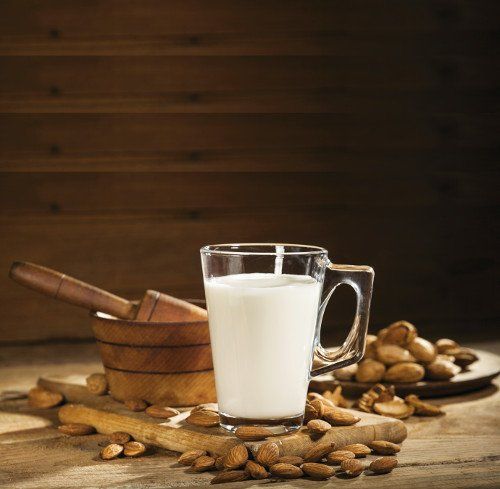U.S. Non-Dairy Milk Sales Reach $2.11 Billion in 2017, Up 61% Since 2012
The report found that sales of non-dairy milk-which Mintel defines as both refrigerated and shelf-stable ready-to-drink almond milk, coconut milk, soy milk, and other refrigerated milk substitutes-have steadily grown since 2012.
Photo © Shutterstock.com/Nikolay Litov

Citing the appeal of plant-based nutrition as a causative factor, Mintel released new research showing that sales of non-dairy milk-which the market-research firm defines as both refrigerated and shelf-stable ready-to-drink almond milk, coconut milk, soy milk, and other refrigerated milk substitutes-have steadily grown 61% since 2012, with the total take slated to hit $2.11 billion for 2017.
Top options in the category remain almond (at 64% market share), soy (13%) and coconut (12%), but novel bases ranging from pecan and hazelnut to quinoa and flax promise to give these favorites competition. In fact, two thirds (63%) of pecan milk purchasers say they bought more pecan milk in 2017 than in 2016, and 58% of quinoa milk consumers say the same.
Established and upstart brands alike are finding consumers receptive to innovations not only in plant bases, but in flavor profiles and functional benefits, as well. Said Megan Hambleton, beverage analyst at Mintel, in a press statement: “We predict that new plant bases such as cashew and rice will allow new entrants into the non-dairy milk category to eventually surpass the soy milk segment, one of the first non-dairy milk segments to really take off with consumers.”
Mintel also examined how consumers approach their milk purchases and found that dairy and non-dairy partisans follow different strategies. Despite the fact that 90% of non-dairy consumers also buy dairy milk, they’re more likely to look for milks that score on flavor (48% vs 40%), vitamin and mineral content (43% vs. 36%) and protein levels (42 percent vs 31 percent) than are exclusive dairy drinkers. Non-dairy milk buyers also tend to prefer “natural” (46% vs 36%) and/or organic (33% vs. 23%) ingredients more than do dairy consumers.
Crucially, consumers perceive the overall health merits of dairy and non-dairy milks differently. The types of milks that Americans perceive to be healthiest are whole cow’s milk (20%), skim/low-fat cow’s milk (18%) and almond milk (17%)-yet nearly one in five (19%) Americans claims to be consuming less dairy for health reasons.
“The healthy positioning and messaging leveraged by non-dairy brands has made an impression on consumers who purchase both dairy and non-dairy milk,” Hambleton noted. “Dairy milk often delivers on many of the attributes non-dairy milk consumers are looking for, but there is a clear lack of understanding. This indicates that dairy brands must better communicate the natural health benefits of dairy milk through campaigns or packaging claims. By focusing on some of the influential factors that non-dairy milk consumers want when looking for milk, such as flavor and health benefits, dairy milk brands may see more success retaining consumers within the category.”
Prinova acquires Aplinova to further increase its footprint in Latin America
April 7th 2025Prinova has recently announced the acquisition of Brazilian ingredients distributor Aplinova, which is a provider of specialty ingredients for a range of market segments that include food, beverage, supplements, and personal care.










